What To Avoid Doing When Self Publishing Your Novel: 101
The list of everything not to do when you're self publishing a novel for the first or fiftieth time.
I'm proud to say that I just published my first novel a few months ago.
But as soon as I held that beautiful paper back in my hand, I was already filled with regret.
Yes, regret. Dreaded regret.
I know I meant to feel happy (and trust me, I am), but right now, I can't help mulling over everything I've done wrong, could’ve done better and should have worked on first.
It's the business owner in me, constantly evaluating my work and trying to do better.
I tell myself to be kind. I'm a first-time novelist, self-learning everything on the fly while maintaining an income.
I can't beat myself up too much that I made some mistakes.
Yet, considering another novel is on the horizon, I don't want to make these mistakes again.
This is everything I regret after self-publishing my first novel (and my list of what to do differently with the second book).
Marketing first, along with everything else
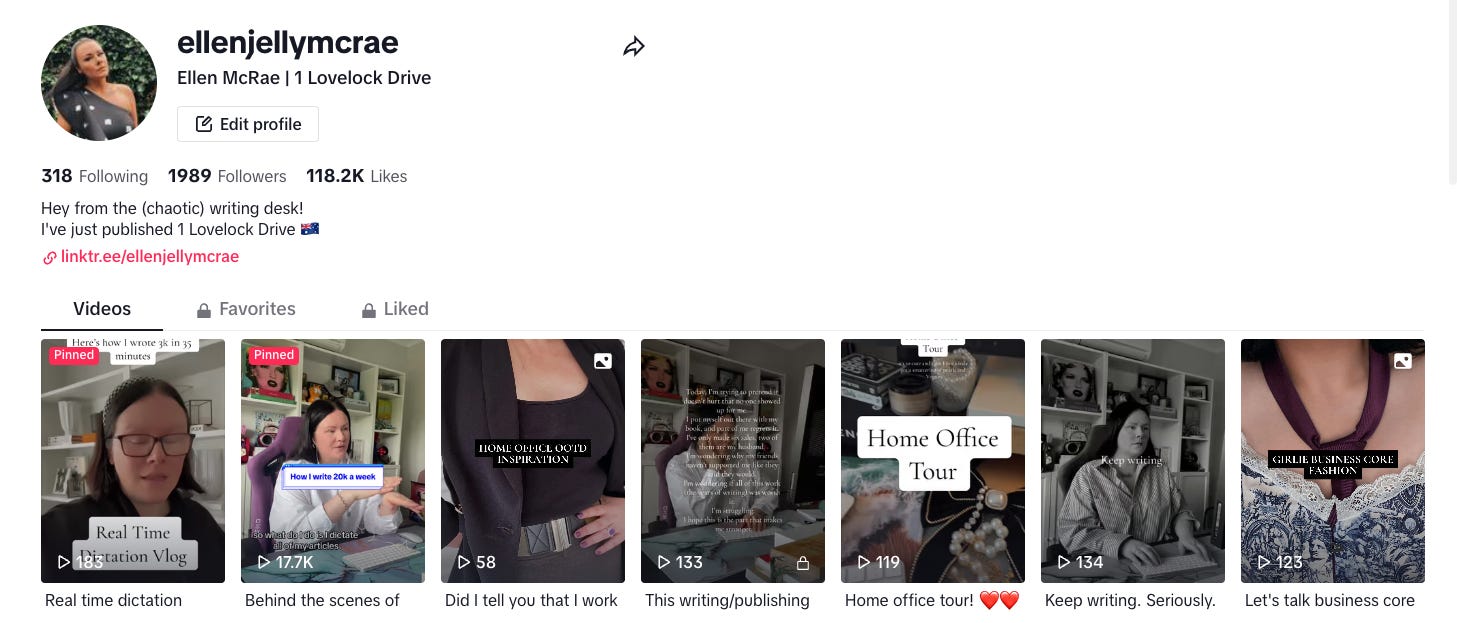
As I'm writing this, my launch weekend has just finished. It's been 48 hours since my book was published, and I have two sales. One Kindle sale and one paperback.
I know where both of those sales have come from, even though Amazon doesn't show me the specific customer names or details. I know these are both from my husband.
He's pretty amazing and supportive.
I'm not upset he was my only sale. I’m disappointed that my family and friends haven't supported me or bought my book, but that's an entirely different conversation I'll share with you another time.
Now my book is launched, I'm dedicating my entire schedule to marketing my book. I'm engaging the following aspects to promote my book to potential readers:
Running social media videos on TikTok, Instagram, YouTube and Pinterest
Running photography-based content on the same platforms
Running Amazon ads
Potentially running social media ads
Influencer marketing
Heavy, word-of-mouth marketing
Possibly looking into putting my book into libraries or book clubs
Sending my book for reviews from potential readers
Here’s the thing: much of what I'm doing now I could've done before the book launch.
For example, I could've created an entire social media campaign about writing the book and launching it, getting behind the scenes into the writing experience.
While I attempted a few behind-the-scenes videos, they were not enough to impact my sales.
I could have just looked at Fidan’s success.
Fidan Shevket, a Sydney-based divorce lawyer, unexpectedly became a bestselling author without spending a cent on marketing. Her book, Hunting With Confidance, is based on a blog she wrote in 2011-2012 about her quest to find a husband.
Fidan built a loyal audience on TikTok—dubbed "FidanTok"—by sharing her daily life, quirks (like her love for lemons and Superman), and authentic personality. She prioritized community over promotion, only announcing her book once she had a strong following.
Her unconventional marketing strategy—posting casual, unscripted videos—led to viral success, resulting in thousands of presales and top rankings on Amazon’s bestseller lists, even surpassing major celebrities.
Despite no paid advertising, Fidan's transparency and engagement turned her into a self-publishing success story.
Fidan Became An Amazon Bestseller In 3 Weeks. She Didn't Spend A Cent On Marketing, Either.
If you've been sleeping on 'FidanTok', now is the time to pay attention.
When motivation was needed the most…
It would've felt more encouraging if I had marketed first and then launched to a big audience, resulting in big sales. It would've made me feel positive about launching a second book or the success of this book.
It doesn't mean it's too late. But when you're writing a book, it doesn't mean you have to do your marketing in a conventional order.
Say it out loud
During the editing process, I read my book extensively, mainly on the computer. I also printed a copy onto standard A4 paper during my initial editing phase.
While it was valuable to read the book on the screen and on paper, I wish I had used one simple method of reading.
I wish I had read the book out loud.
It was a game changer because:
It was incredible to hear how the language in the conversations and the descriptions came to life when I read them out loud.
It really pointed out places that needed more or less description.
It really highlighted the way the language flowed and when it felt stuck and awkward.
I also found it incredibly easy to pick up on mistakes when I read it out loud. It's like it stopped me from skimming over the content.
It’s never too late (or early) to read it out loud
I didn't read the book out loud until one of the very last edits. I wish I had done every edit by reading it out loud.
I’m confident it would've sped up the process for me by eliminating the need for multiple edits on the same content.
By the way, I've seen many writers talk about reading their work out loud, and I'm kicking myself that I didn't follow their advice sooner.
It feels like they've all known about the secret way of editing, and I'm really just finding out about it.
But hey, better late than never, right?
Read the dedication
When my husband read the first couple of pages of my book, he had questions, questions I didn’t expect.
We were lying in bed when he forced the book into my hand to ask me a question.
He read the opening dedication to Mum, a set of quotes from her favourite movies, lines from The Adventures Of Priscilla Queen of the Desert and The Birdcage.
I thought he was asking me about what these lines meant and why they were in a dedication to my mum. But then he read it out loud to me, and I realised there was a big repetitive typo in the dedication.
I couldn't believe it. I couldn't believe the amount of times I had run the book through editing programs, and none of them picked it up.
As context, the book has been run through the following programs:
Grammarly
ProWritingAid
Hemingway App
AutoCrit
Not one of these programs picked up on the typing error.
I was fuming when I saw the error. It was too late to change it.
It's embarrassing to make a typo so early on in the book, especially one that means so much to me. Thankfully, my Mum hadn't seen it but now I pointed out I'm sure she will never unsee it.
AI Anger
Part of me contemplated suing these editing platforms for not picking up on the error. Considering how many times I had used them, it felt like they were broken, to not pick up on this.
Wanting to take legal action was an angry, knee-jerk reaction. I would never do that.
I have to blame myself. One thing I didn't do was read the dedication out loud like I did the rest of the book.
Imagine if I had.
Where are the beta readers?
The feedback I received about my storyline, the book's pace and overall feel came from an editor I paid to review it.
It doesn't mean the feedback I received from her is invalid or wasn't helpful. But as I emerge out of the editing process, I'm jealous of the authors who use beta readers, receiving additional feedback before publishing.
Beta readers are generally book lovers in your genre who give feedback on your manuscript before publishing.
Using beta readers would have offered me:
Insight into overall areas that I can improve
Specific areas that needed changing that one person can’t see
An idea of whether the book would sell to my audience
If people would buy the book with changes made or as it stood
Sometimes, I imagine what this feedback could have been and what I could’ve learned.
Beta Assumption
The grass is always greener.
I’m making an assumption about how brilliant working with beta readers is. As I haven't used them before, nor have I been a part of the beta in the process, I don't know if it would actually offer me the list I just outlined.
I’m guessing.
But from a marketing point of view, it would've been nice to have those readers invested in my book beforehand. If I had that natural word-of-mouth from the beta readers, I might have had more sales.
I wish I had at least investigated it before publishing, even if I found out it wasn’t for me.
The publishing process has taught me a lot about playing all your cards. You don't know how much a process will help you until you try it.
Publisher or no publisher?
I love that I'm a self-published author.
I did a lot of research going into the process about whether I was going to be self-published or whether I would venture down the traditional path.
Settling on self-publishing was easy. (I can dive deep into the decision-making process; just let me know.)
Yet, there is this little part of me that wonders what would've happened if I submitted my book to a traditional publisher.
Would I be in a different position right now?
Would I have more sales?
Or would I feel rejected and dejected by the authoring process?
Going through a publisher's submission process would've been a valuable experience. Finding out what our publishing house thought about the book beforehand could have changed what I wrote and how I published it.
But it's not like I haven't been through that before. I have submitted multiple attempts for Mills and Boons with no luck.
There’s a reason I don’t keep attempting to publish a Mills and Boons. The rejection process defeated me.
Working with the publisher is a bit of a sliding-door moment for me. I assume I’m thinking about it because I’m not making big sales yet.
I might not have this on my regret list when I’m a bestseller (I hope!).
Time will tell.
Silence from my loved ones
For a long time, I kept the book's launch relatively close to my chest. Of course, my husband knew about it and was supportive of its release.
But I didn't tell my friends and family until I had a release date and the final copy.
It's been amazing to hear the congratulations and interest in my work. I could count the number of times someone has asked me about my work or how work is even going on one hand.
The people in my life don't seem to care about my writing.
Now I’m a published author with a book to prove it, I still don't think they care. How do I know this?
One friend has bought my book
Two out of the three people I dedicated my book to have bought it
None of my family or immediate friends, including my bridesmaids and groomsmen from my wedding, has bought it
I didn’t write the book for my family and friends to be my only customer. I also didn't tell them to make them care, nor did I do it for attention. I actually ended up telling them because I didn't want to share what was going on in my life.
And let’s be real: If I didn't say something and then they discovered my book while shopping on Amazon, what would happen?
Seeing the lack of support on the sales page makes me feel regretful for sharing. I feel more vulnerable than I did before, even though putting a published book into the world has been the hardest professional accomplishment I've ever done.
A waste of time
Moreso than anything else, I see this regret as more of a waste of time problem.
When I'm writing and running my business, I don't invest my time in tasks and products that don't give back to my business.
Spending my time telling my friends about the book hasn't given back to me. No sales, no confidence, no warm and fuzzy feelings you hope your loved ones will give you when you’re going out on a limb.
I wish I'd spent my time doing other things, like marketing to potential readers.
The printed copy problems
When I first put my book together, I printed it on A4 paper and bound it for easy reading.
The printing cost me somewhere between forty to fifty dollars at my local printing place, Officeworks.
I hated paying that much, but I didn’t have any other choice.
Well, it turns out there was another way of getting the book printed without spending that much.
I could have:
Put the book into a Word document
Submitted it to the backend of Amazon
Ordered an author copy
I could've done that at any stage during the process and paid six to seven dollars for the printing plus a few dollars for shipping.
I wouldn't have needed to commit to publishing the book on Amazon or set a launch date, either. I’m a poor writer; I can’t afford to spend money where it doesn’t need to be spent.
At least I won’t make this mistake again. Neither will you future self-published authors.
Priority Amazon Ads
As part of my marketing tasks to do post-launch, I’m investigating Amazon paid ads.
As my book is exclusively sold on Amazon, I have a built-in audience of loyal readers I can appeal to. It would be unwise of me not to look into this and experiment with running paid ads.
Do I have the time now to do my research on Amazon paid ads?
I sure do.
But I'm regretful that I didn't look into it sooner so I could hit the ground running the moment the book was published.
It's disappointing to be playing catch-up. My confidence could have used established paid ads already running at the time of launch.
Second mistakes
I won't be able to make this mistake again. Once I’ve researched and experimented with running ads, I won’t have this problem during the next launch.
In hindsight, though, I didn't have much time. Again, this is another moment to exercise kindness.
Had I focused on Amazon Ads, it would have taken a lot of time out of the editing process, too, time I probably didn’t have.
Too many (editing) suites
As I mentioned before, I have used a lot of different editing suites to edit the manuscript. As a reminder, I used:
Grammarly
ProWritingAid
Hemingway App
AutoCrit
As I reflect on the process, sometimes, I wish I’d stuck with one editing program.
Though every editing program has its benefits and offers different insights into the final edit, sometimes you have to keep things simple.
I was jumping between different editing programs, losing where I was up to, making a change on one program and then changing it back on another.
I was constantly copying and pasting between programs and getting frustrated when one wasn't working properly.
I found myself tired from the constantly checking content, feeling like I wasn’t getting anywhere from how much there was to do.
Sticking to what?
I'm evaluating which editing suite I would go with on the next book edit.
My instinct is to say AutoCrit; it’s built for fiction writers like me. Yet, it doesn't have the capabilities that Grammarly does. I’m clearly torn.
At the end of the day, I need to uncomplicate the process to myself. Pick one and stick with it.
Loving this post? Come join me for more self-publishing and traditional publishing deep dives!
Paperback sacrifices
I dreamed of publishing the perfect book—a hardcover classic design with thick, luscious pages and a coloured interior.
The moment I researched paying for this beautiful design up front with an independent printing service, quickly discovering the astronomical costs, I found myself on Amazon.
Print-on-demand ideally suited my non-existent, poor writer budget. But then I took my dream design to Amazon and discovered I would continue to dream.
Printing in hardcover isn’t available in Australia, where I live. This seems to be a limitation of Amazon’s ability, a discovery I made well after I committed to the platform.
There was an option for me to add a hardcover option on my Amazon account, but as it’s printed from the US, it would render the shipping costs impossible for my Australian customers.
I had already found a hurdle in my Amazon journey. It made me wonder what was next.
The compromising curve
Here’s what this first issue taught me: throughout the publishing journey, I would need to make compromises. I would need to adjust my dream plans to suit what I could achieve on Amazon.
These compromises were necessary. I either compromised and published a book or stood firm and didn’t publish at all.
It wouldn’t be the last time compromising was necessary. When publishing a book, best to get used to compromise.
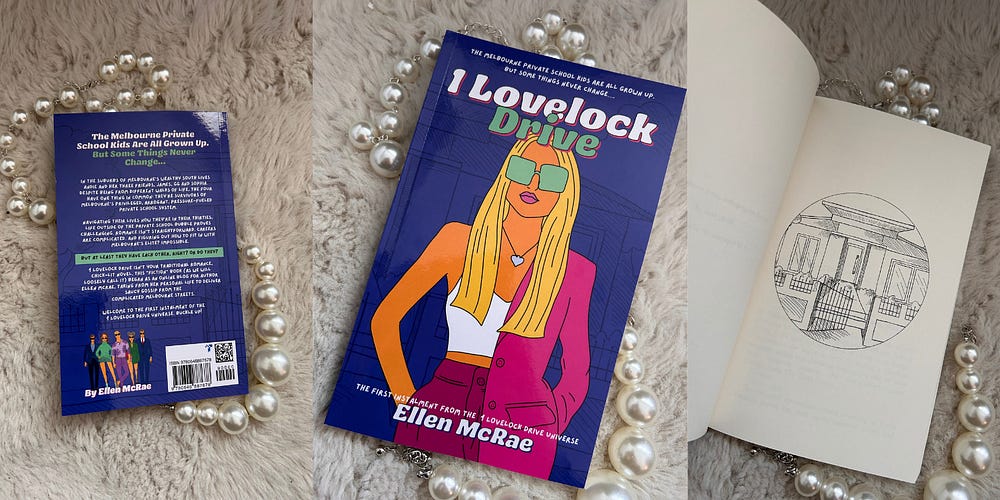
Free accounts for everyone
Anyone can become a writer on Amazon.
To create a writer account, I didn’t have to hand over a cent nor promise to pay fees at a certain point in my success. The only money Amazon takes is when I sell a book.
This part caught me off guard. Not because I thought I should have to pay money to sign up as a writer. But suddenly, it put something into perspective about the authors on Amazon.
Anyone can be a writer.
Anyone can assemble pages and a cover and sell a book without any quality control, market research, or consideration for the reader.
It became a thought I couldn’t ignore. I was joining literally thousands of people trying to do the same thing as me.
I felt this pressure to not only do my best but not to be some Amazon author who thought they were good but turned out to be really bad.
I didn’t want to become a reason why future Amazon authors pay to join the platform.
Pressure issues
Pressure is completely standard within the publishing process.
A little bit of healthy pressure can help you as a writer. If you're feeling it during your publishing process, try to embrace it. Use it as a tool to improve your work, not fear it.
You can't permanently remove pressure from your life. And as you can't beat them, you might as well join them.
Editing - deep dive
I Googled the best editing software to create an Amazon manuscript suitable for uploading to Kindle and print on demand. I hadn’t done this before. I was a self-publishing student, after all.
Before looking, I hoped everyone in the literary world used one program or Amazon restricted how the manuscript was uploaded.
I didn’t want to make a choice. I had made enough choices while writing the book; I didn't need any more.
I wasn’t in luck. When I started searching, I found out there are many software options for putting together a manuscript. The most popular ones were:
Reedsy
Scrivener
Atticus
Vellum
Word
Google Docs
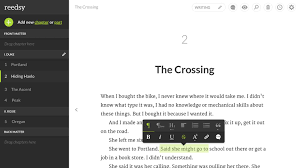
So, what did I end up using?
I could talk all day about the ins and outs of the best editing software for writing a novel. There are many factors in choosing the perfect editing software because many have drafting capabilities, too.
They are designed to help you build chapters and maintain continuity, not just exporting for Amazon’s printing purposes.
However, after completing the drafting process, I cared more about programs that allowed maximum editing capability and an exporting system fit for Amazon (which turned out to be a PDF-formatted document).
I also needed a program that didn’t break the bank. Though I was happy to pay a fee for one of these programs, it couldn't be hundreds of dollars. I couldn't afford to outlay that money without testing the program first to see if it had all the features I needed.
That meant the ideal program also needed a free trial option.
After reviewing everybody's recommendations, I landed on Word of all things. Word was the only program that:
Was easy to use — I already knew the ins and outs of Word and how to create a printable document on the platform.
Free to use—This specific task cost me nothing since I already have Microsoft Office.
Allowed me the greatest design flexibility — While I liked the sophistication of the other programs, they simply didn't have the fonts, design or flexibility to align pages the way I wanted them to look.
After the hardcover disaster, I thought there had to be a problem I wasn’t seeing.
Yet, many other published writers also touted Word's benefits for printing their books. This was the social proof I needed.
In the publishing process, we’re trained to feel wary of free options. We’re meant to assume they're almost too good to be true.
I learned this assumption didn’t always have to be the case.
Kindle Create lessons
I assumed I would be able to use Word to create the Kindle version of my book. However, many writers said they had used Word. Many also said there was an Amazon-specific program just for Kindle.
It was then that I found Kindle Create. Another free program.
Though I wasn't enthused by the functionality and design options of Kindle Create, it was the easiest to put together the EPUB manuscript that Amazon required.
This free was too good to be true, though. One moment free was good, the next free was challenging.
Again, it's one of those moments where it was a compromise. Amazon wanted something specific for me, so I had to bend my plans to make sure I could accommodate those needs.
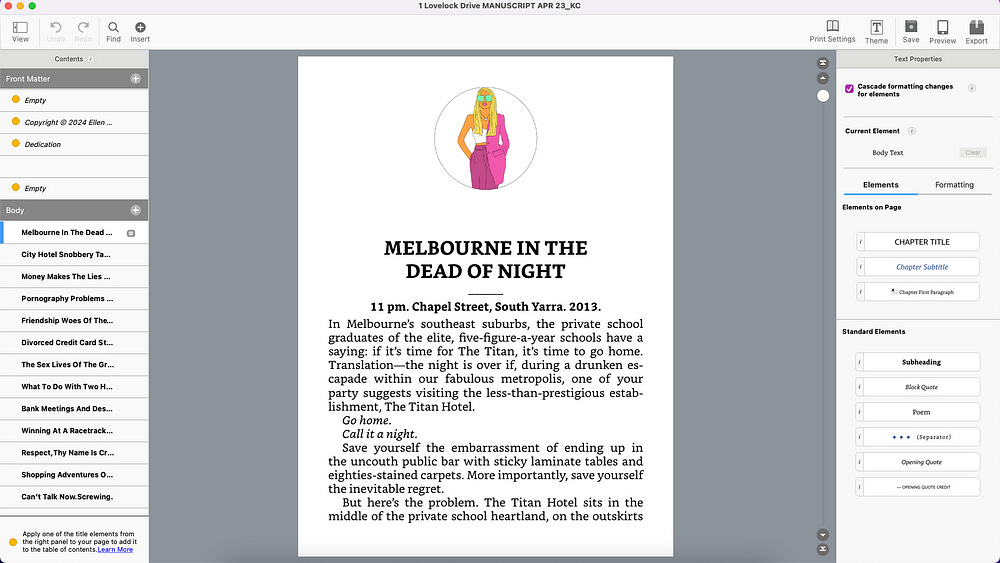
Book cover problems
The book's front cover is another area that I needed to format and load to Amazon.
I was quietly confident about creating my own cover because I had worked as a website designer in the past, using Canva often to create graphics.
There is also endless information online about what is needed on the front cover of a book, and if you're ever in doubt, five minutes spent walking around a bookshop will also provide you with examples.
I knew I needed to follow other people's examples while injecting my own imagery into the design.
A year before publishing, I hired a graphic designer to create character images for my fiction series. Once I had that imagery, I knew I would use it for the front cover of my book and future books in the series.
I didn't need the graphic designer to then take that imagery and turn it into a cover. Amazon's system is pretty easy to follow if you can use programs like Canva.
When your manuscript is ready to go, you simply log in to Amazon’s “Kindle Direct Publishing” in your writer's area and follow the instructions on the size of the cover required for your book.
It takes under a minute to punch in the details of what you want for your cover.
They call it the KDP cover calculator, as shown above. As you can see below, all you need to do is select the appropriate details from the drop-down options, and a cover template will be created for you.
Here is an example I’ve plugged in to show you how to cover the template turns out. I downloaded the template, uploaded this file to Canva and used the dimensions to create my book.
I’ve simplified this process, but I am happy to do a deep dive into the cover-creating process in a dedicated article if you need it.
It took many attempts to ensure I had a perfect cover in place. Once I saw it on the screen in Amazon's program, I could see things differently. Amazon would also point out any issues with the cover, such as printing on the edges.
Although it seemed like it should be loaded and moved on, it was one of the longest processes for me. I had never created a book cover or used Amazon’s printing system.
This reinforced the idea that the more you learn these programs, the longer it will take to get everything right.
If you enter with the mindset that everything will take you a long time to learn, you won't be disappointed when it actually takes you that long.
Proof copy regrets
One of the best aspects of self-publishing on Amazon is that you can order proof copies of your book; you just pay for printing and shipping.
For a copy of my book to see how it looked as a bound book cost about seven dollars. That was cheaper than going to my local office supply store and having it printed and bound. It was fifty dollars cheaper on Amazon.
I never contemplated publishing my book without completing a test copy, first. It's a part of quality control, and no matter how much it costs, I was going to see the book first.
Yet, I didn't realise I would need so many test copies just to adjust the smallest parts of the design.
I ended up with four test copies, and these were to:
See how the book looked in a matte finish versus a gloss finish.
See how the font on the back of the book looked in a cleaner design to match the other fonts better.
See how the front cover image was printed within Amazon’s guidelines. I thought the cut-off point of the image on the front cover was higher than it actually was.
Test how the Amazon-generated barcode on the back of the book compared to the one I created on Canva.
Did I think I would need to do so much quality control? No way. I assumed one or two copies at most. Even with all my design skills and confidence in my decisions, I learned each stage of the writing process is as long as the last.
If this process doesn't make you appreciate what goes into a book or the production of any product, I don't know what will.
Issues with scheduling
I changed the launch date of my book several times.
Before even getting to Amazon, I had changed the date three times. Once I went to Amazon, I set up a time for a pre-sale, and without realising, I hit publish on the pre-sale.
That meant the book was live for ordering on Kindle when I wasn’t ready.
I changed the pre-sale date. I had to, I wasn’t ready after all. But then came the rule I wasn’t aware of.
Once you change the pre-order date twice on your Kindle book, you get banned from running a pre-sale for 12 months. Amazon puts this ban in place to stop you from constantly changing your book launches and giving false hope to its customers.
I received a warning. If I did this again, Amazon would enforce the pre-sale ban. I was on my last chance.
It’s a fantastic rule. But how was I to know? I never thought of checking to see if this was a problem, nor did I think I would ever have to change the date once I reached this stage.
By the way, I'm not too angry I made this mistake or that I nearly got banned. Not only has it forced me to pick up my game and work harder to make sure the book was ready by that pre-date time, but it has also given me insight into how business runs.
You can't just change the date of launches when customers and businesses are preparing for your launch. You can’t manipulate other people's time when people are relying on you.
Though accidents happen within a business, and sometimes you have to make these hard calls, this near Amazon ban taught me about being someone who always has to make hard calls.
You can't be that person.
You have to be better at what you do and more precise with your business actions. Or you will get penalised.
The print-on-demand lessons
I appreciate that many people aren’t going to love the print-on-demand aspect of Amazon.
Whilst I would've preferred a traditional publishing approach, where copies were printed in advance and sent to book shops, from a waste point of view, this is a far better option.
It doesn't make sense to print copies if I don't think they'll sell or if I'm unsure of their popularity ahead of time.
It also makes sense from a personal cost point of view. Outlaying the amount needed to print the book, shipping it to my home, and then shipping it out to buyers, as well as running an online store to sell the books, all add up.
It's a lot of money before even publishing a book, and it's not a start-up cost I’m 100% certain I can recoup.
I love this side of Amazon print on demand. But I learned there is much I don’t like.
I'm not thrilled with the way Amazon sends its books. They arrive in an undignified, brown paper package with an Amazon logo. I would prefer something a little more glamorous or even the option to personalise the packaging.
Yet, I’m comforted by the knowledge Amazon shoppers know what to expect when they buy books from the website.
Seeing this side of the purchasing process for a customer has inspired me to run a limited edition, hardback copy of my book at a later date. During that process, I will have custom mailers, a hardcover I've always desired, and thank you cards I've designed.
In many ways, it's nice to see what I like and don't like and then make plans to give people what I really want them to have.
Sometimes, you need to see the bad to appreciate the good. Sometimes, you need to have the bad moments so you can work harder towards the perfect product.
Self publishing regrets, let’s not have them
There's one regret about the writing process that I’m never going to have.
I’m never going to regret trying.
I worked so hard to get where I am today, and it's been incredibly challenging along the way. It has been the biggest labour of love and sacrifice. I can’t regret the effort.
To hold my book in my hand and to see the finished product has brought me immense joy. I feel proud of what I've done, and if I could go back in time and do it all over again, I would.
Sure, there would be a couple of tweaks and ways of speeding up the process. But it wouldn't ever stop me from taking the leap of being a self-published author.
I say go for it
If you're thinking of venturing down this path, I will be your biggest cheerleader. I can predict that you will have regrets along the way.
Regrets are only a normal part of life and business. But I can tell you the biggest regret you'll have is not doing it. Letting that idea go to waste will haunt you forever.
Just go for it.
Write the book you want to write.
Publish that story and take the leap.
Because right now, it's worth it.



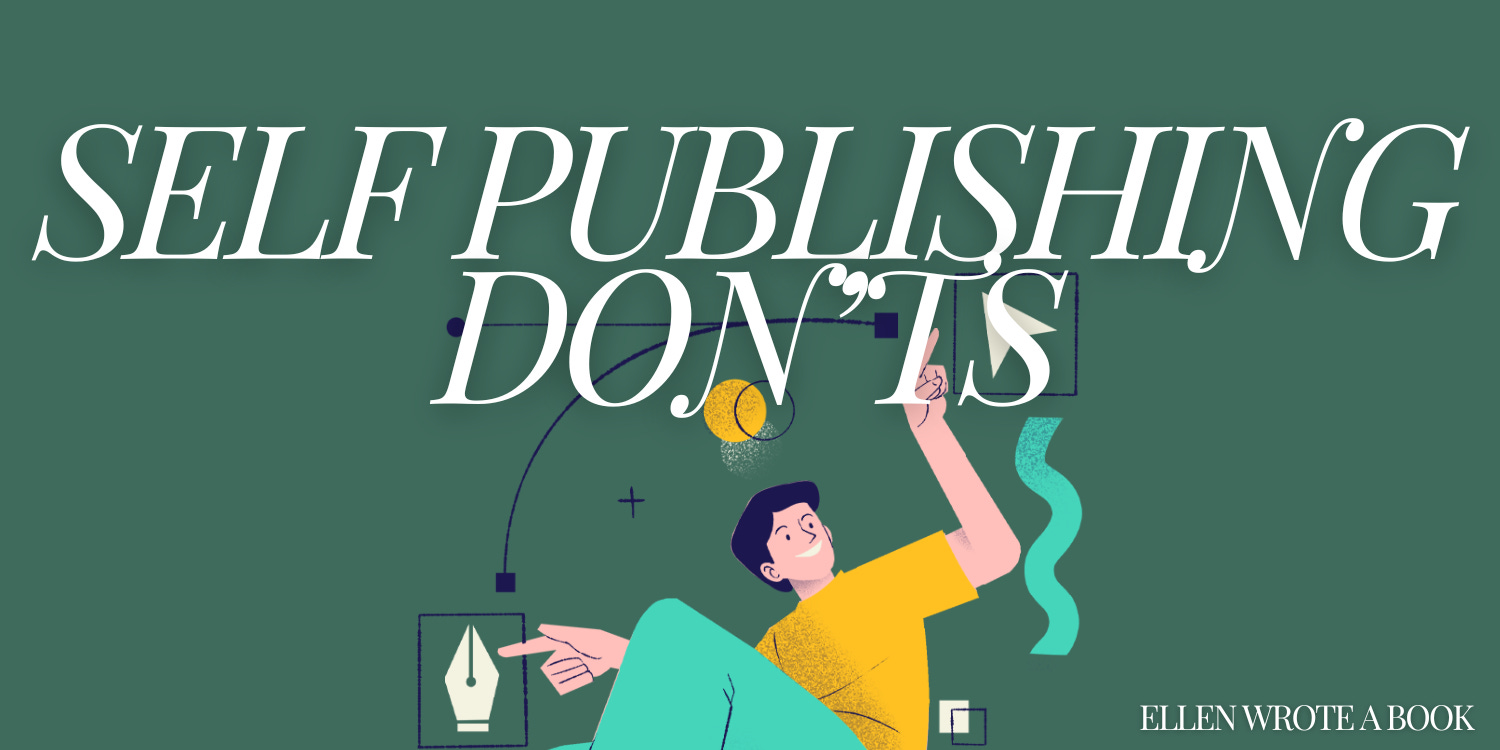
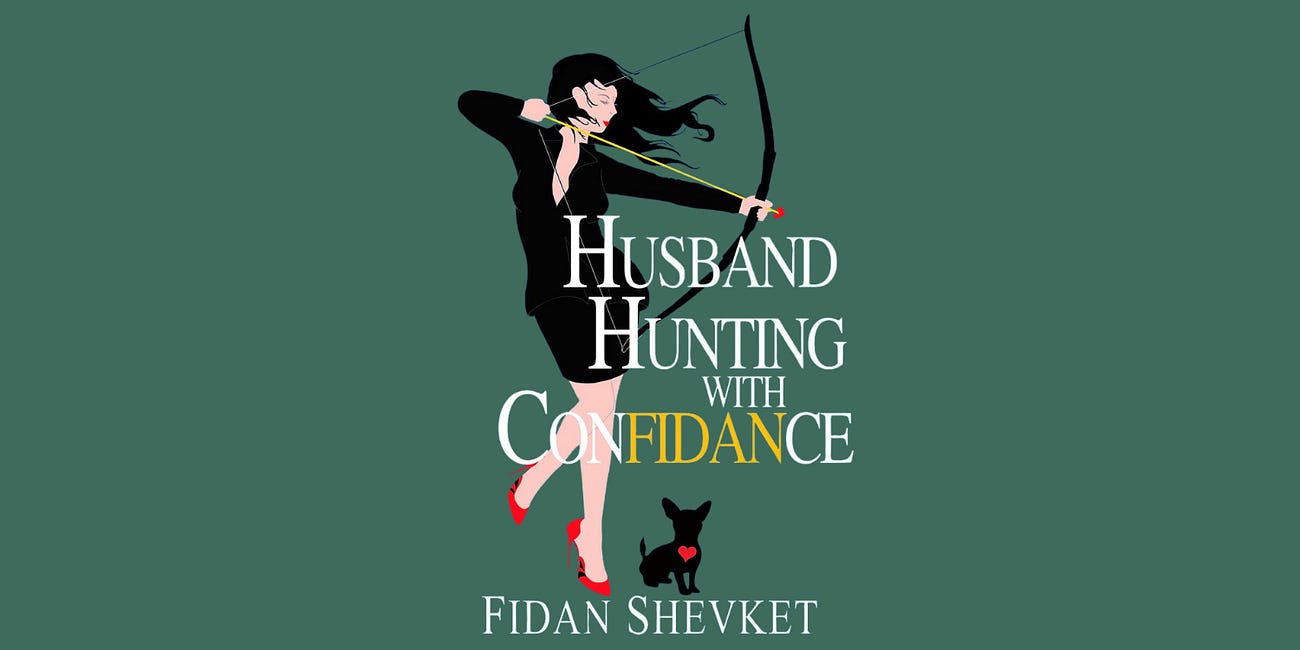
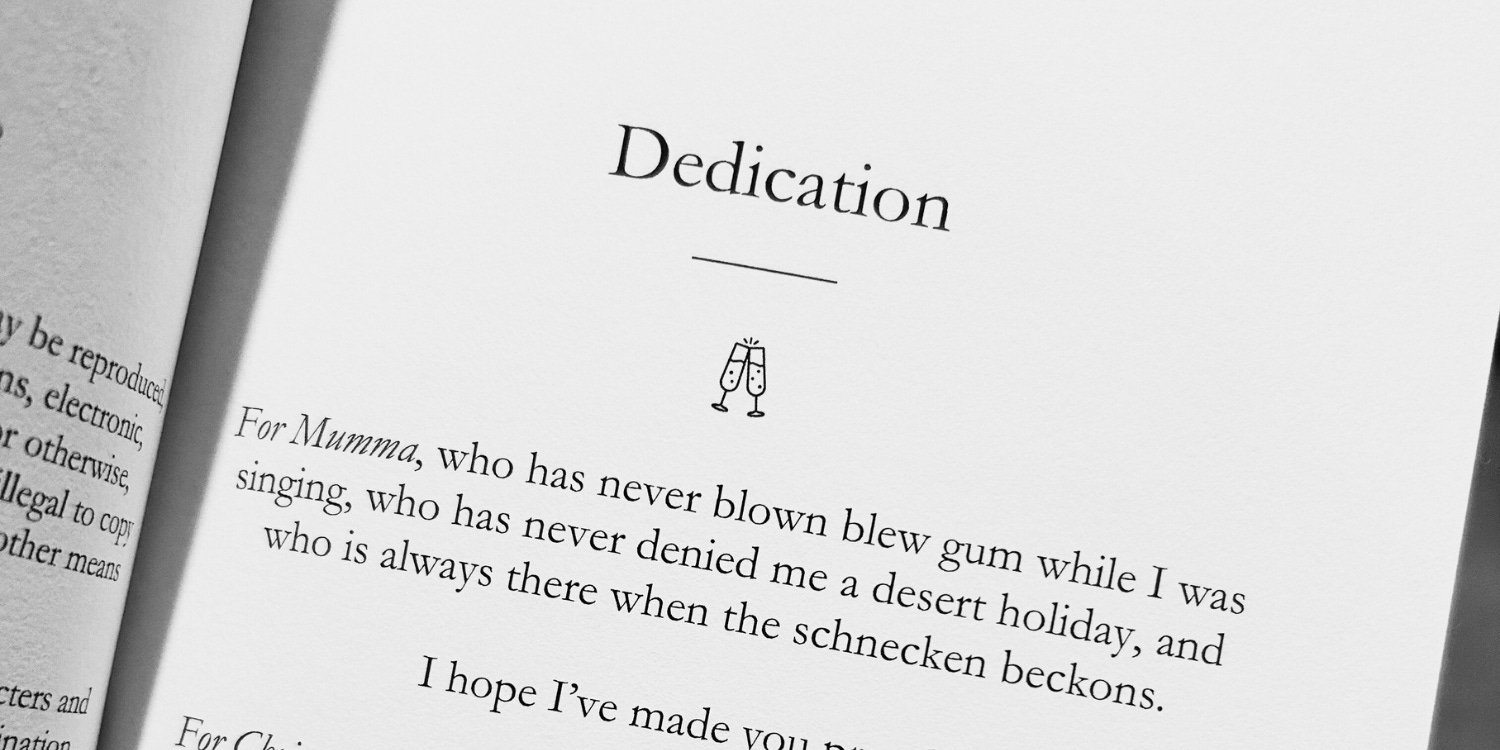
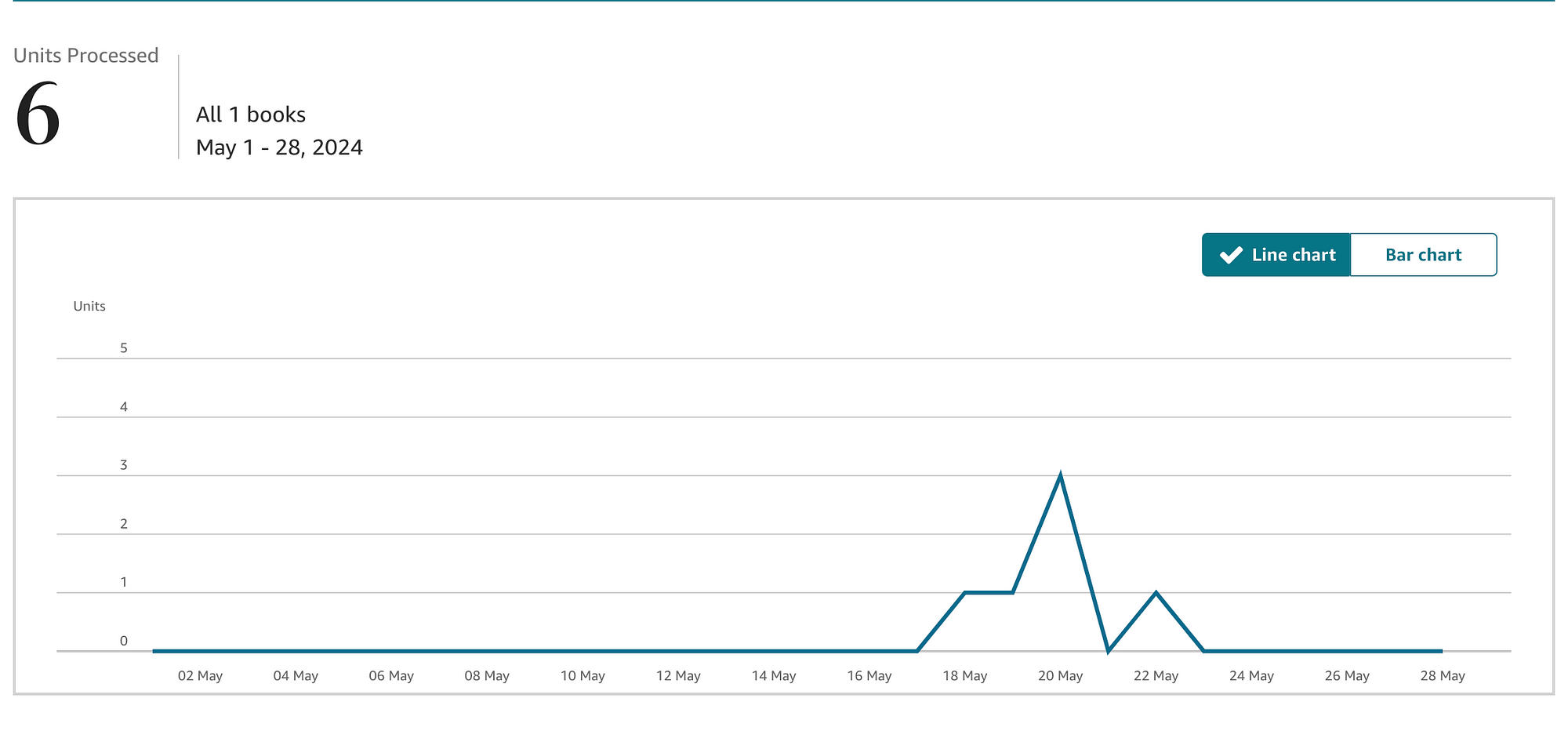
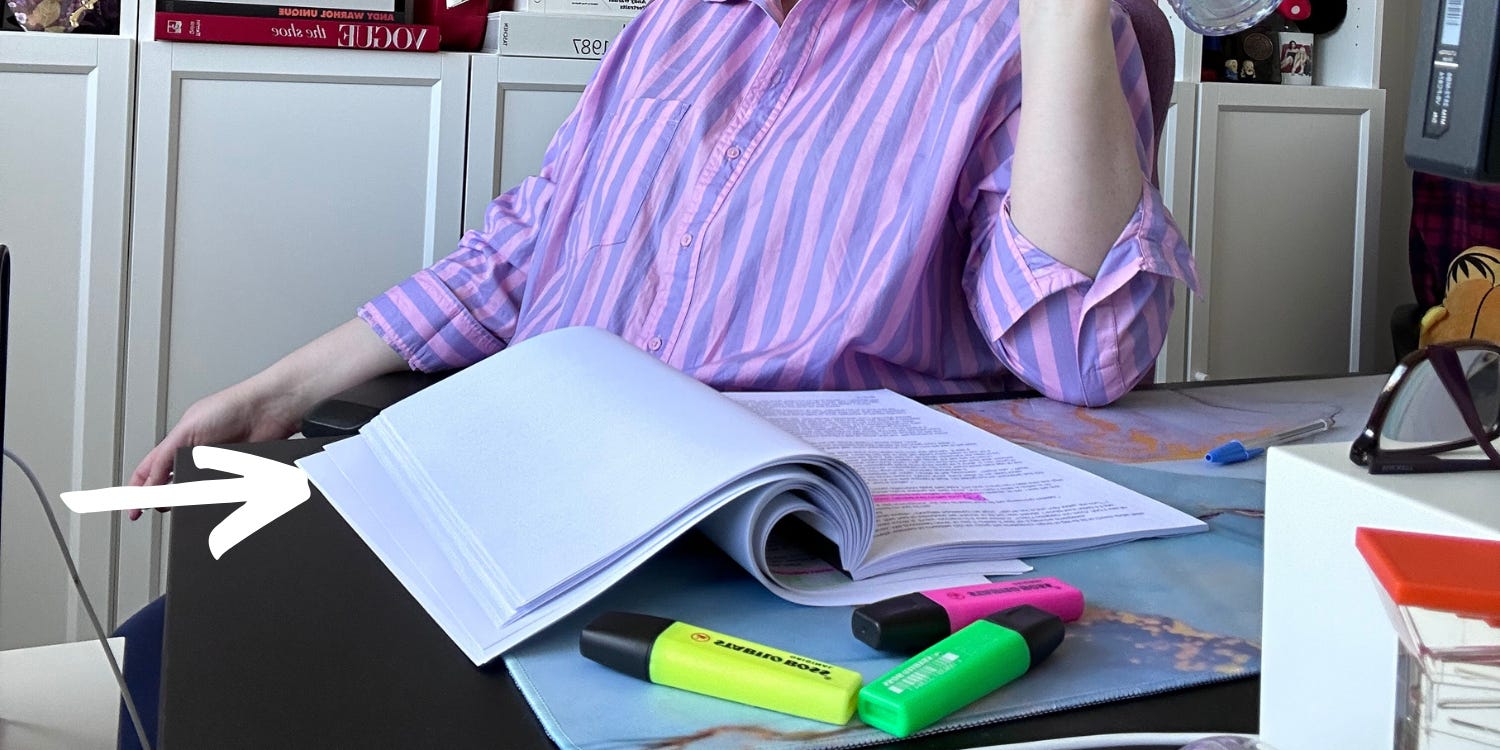
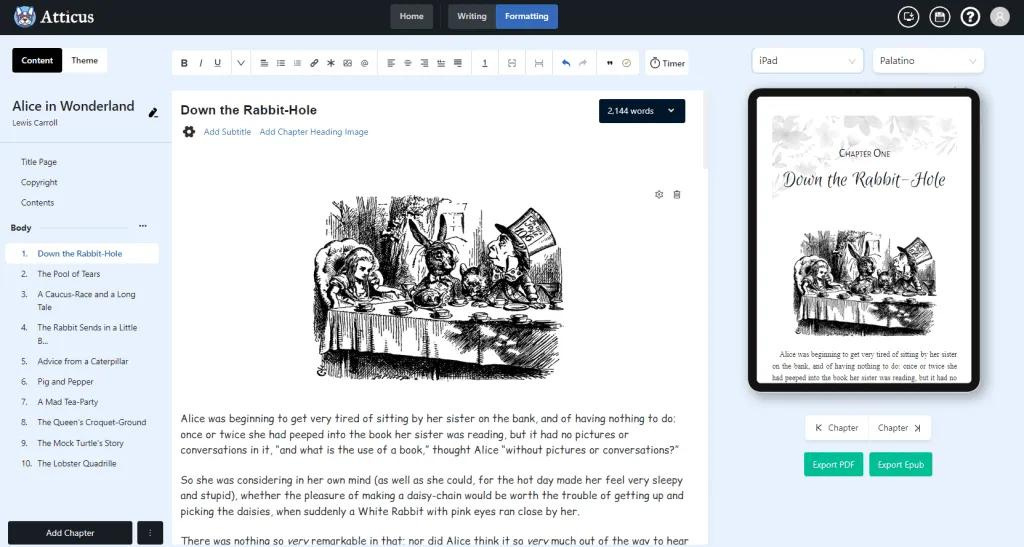

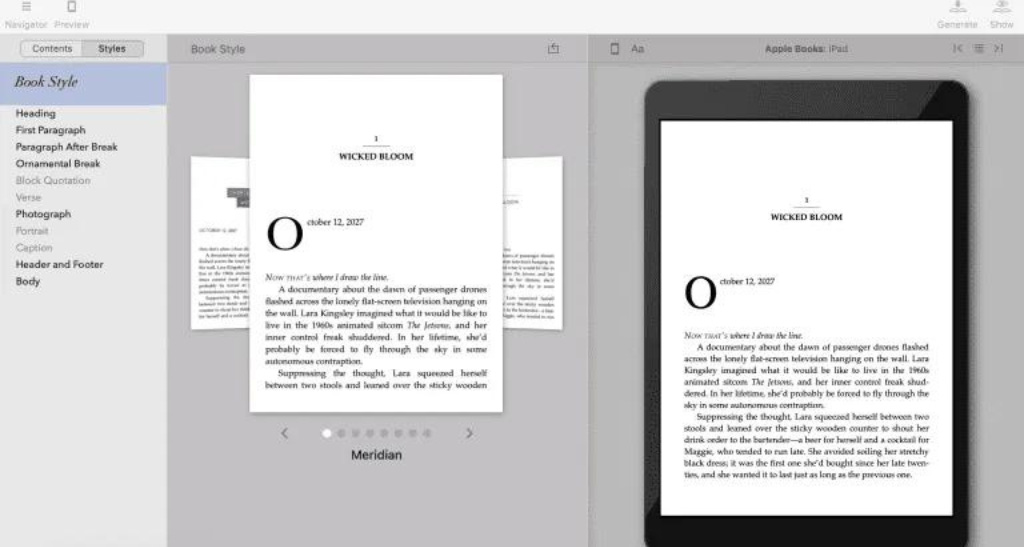

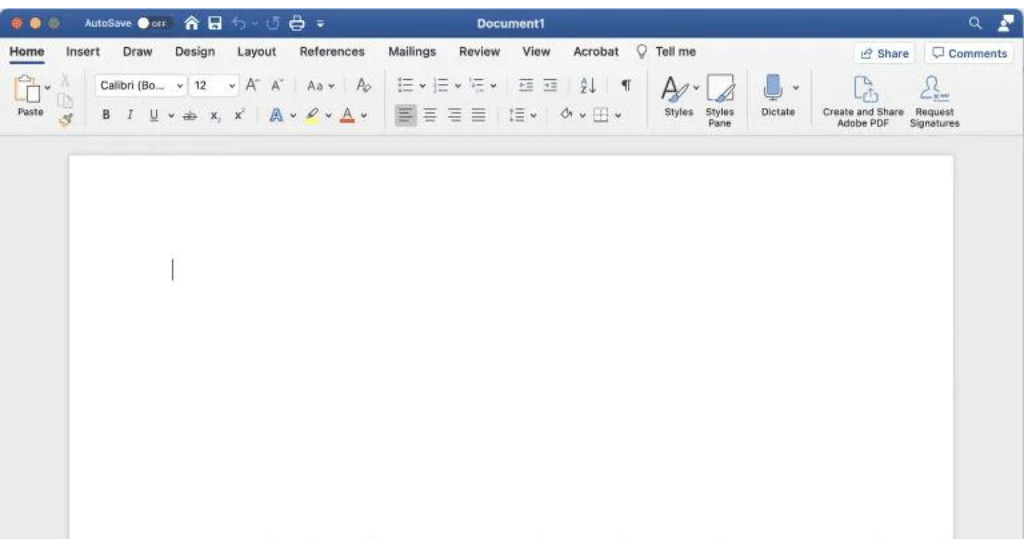
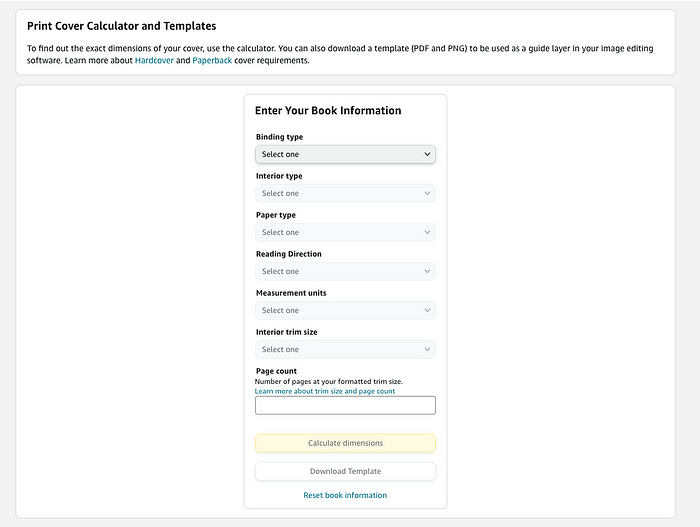
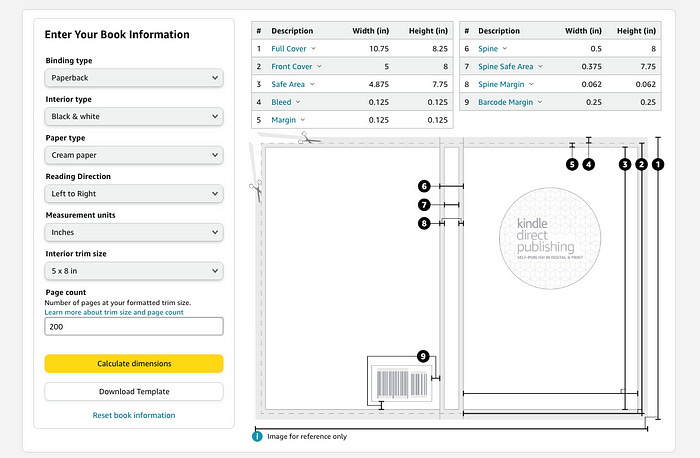
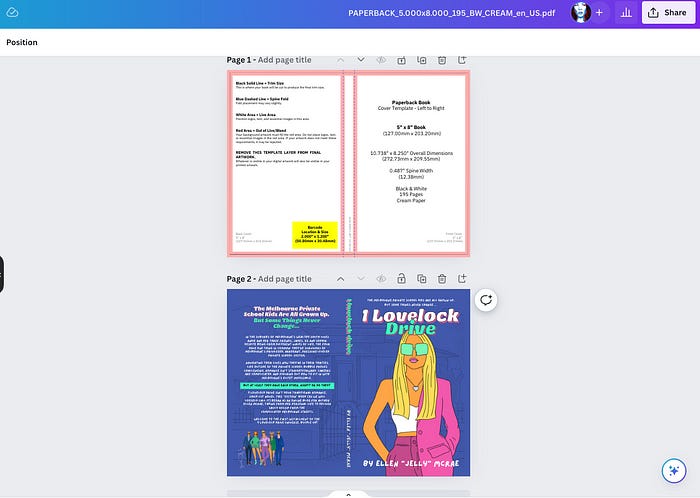
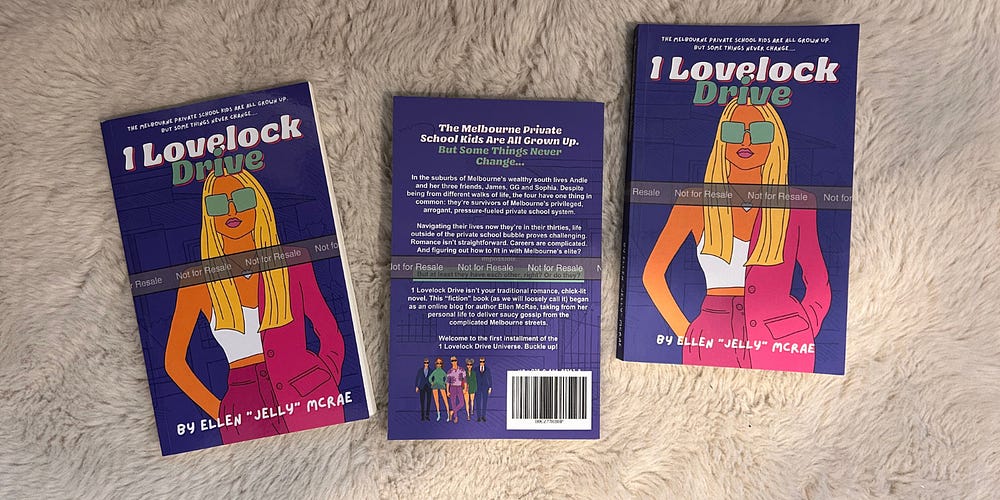

Good stuff!
You did not get into publishing on IngramSpark after you're up on Amazon, so that bookstores and libraries can find your book. This would be another good topic for you.
Two other learnings:
- I'm publishing workbooks. Amazon may not let me do a Kindle version, since they are full of forms and tables. Hardly matters to me; workbooks are much more useful in paperback versions.
- I send my books that will go on Kindle to an outfit in India called Atritex to be formatted properly and uploaded to Amazon. Very fast and affordable and high quality.